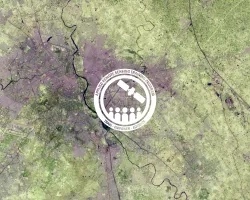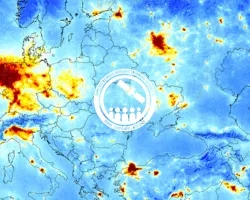Description
This training will provide an overview of spectral indices for land and aquatic applications. Specifically, this training will begin with an introduction to the Normalized Difference Vegetation Index (NDVI), along with its calculation, uses, and prominence in Earth science. In session two, we will expand to other spectral indices primarily used in aquatic ecosystems, such as the Normalized Difference Chlorophyll Index (NDCI), Normalized Difference Aquatic Vegetation Index (NDAVI), Floating Algal Index (FAI), and Normalized Difference Turbidity Index (NDTI) for aquatic applications. In the final session we will review additional land-based indices such as the Enhanced Vegetation Index (EVI), Soil-Adjusted Vegetation Index (SAVI), and Normalized Burn Ratio (NBR). Not only will these sessions discuss the correct circumstances under which to use these indices, but participants will also take part in hands-on indices calculation over relevant study areas. Learners will work with data from Landsat 9 OLI-2, Sentinel-2 MSI and Harmonized Landsat Sentinel-2 (HLS) for indices calculation. The training will also discuss pre-calculated index products such as Terra MODIS vegetation indices and HLS vegetation indices suite and upcoming data products available based on user feedback provided to the Satellite Needs Working Group. Use cases from recent Earth Action projects (such as NASA DEVELOP) will further highlight how spectral indices can provide essential information about land and aquatic environments.
By the end of this training attendees will be able to:
- Recognize commonly used spectral indices in land and aquatic environments
- Distinguish between spectral indices to select those best suited for a given land or aquatic system of interest
- Compute spectral index calculations over appropriate areas of interest
- Acquire spectral index products from a variety of sources
Local, regional, state, federal, and international organizations involved in land or aquatic ecosystem management.
- Three, 1-hour sessions
- Identical sessions will be offered at two different times of day (11am-12pm and 3pm-4pm ET)
Trainers: Britnay Beaudry, Sativa Cruz, Amber McCullum, & Juan Torres-Pérez
- About ARSET
- Training Overview
- What are Spectral Indices?
- What is Normalized Difference Vegetation Index (NDVI)?
- Exercise: Calculating NDVI in Google Earth Engine
- Summary
Materials:
Materiales en Español:
[Optional] Although NOT A PREREQUISITE: To follow along with the demonstrations for this training, please create an account to login to Google Earth Engine (https://earthengine.google.com/).
Trainers: Britnay Beaudry, Sativa Cruz, Amber McCullum, & Juan Torres-Pérez
- Introduction
- Overview of Indices for Aquatic Applications
- Normalized Difference Chlorophyll Index (NDCI)
- Normalized Difference Aquatic Vegetation Index (NDAVI)
- Floating Algal Index (FAI)
- Normalized Difference Turbidity Index (NDTI)
- Example: Index Calculation in GEE
- NASA DEVELOP Use Cases for Aquatic Indices
Materials:
Materiales en Español:
Trainers: Britnay Beaudry, Sativa Cruz, Amber McCullum, & Juan Torres-Pérez
- Introduction
- Enhanced Vegetation Index (EVI)
- Soil-Adjusted Vegetation Index (SAVI)
- Normalized Burn Ratio (NBR)
- Example: Index Calculation in GEE
- NASA DEVELOP Use Cases for Land Indices
Materials:
Materiales en Español:



